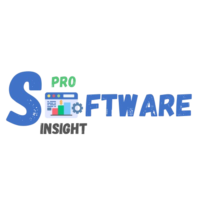Therapy Practice Management Software - Must Have Features

Table of Contents:
Intro
- What is Therapy Practice Management Software?
- Must-Have Features in Therapy Practice Management Software
- Challenges to Consider
- Conclusion
Managing a therapy practice involves more than just offering exceptional care to clients. Behind the scenes, efficient organization and seamless administrative processes are essential for maintaining a thriving business. This is where therapy practice management software comes into play. If you’re considering implementing such a tool in your practice, knowing what features to prioritize can save you time, reduce stress, and improve client outcomes.
In this blog post, we’ll explore the must-have features of therapy practice management software and how they can transform the way you run your practice.
What is Therapy Practice Management Software?
Therapy practice management software is a specialized digital solution designed to streamline the administrative, operational, and clinical workflows of mental health practices, counseling centers, and therapy clinics. It serves as an all-in-one platform for scheduling appointments, managing client records, processing payments, and ensuring compliance with industry regulations.
This software is particularly relevant for therapists and practice owners who want to focus more on client care while reducing the burden of manual administrative tasks. Whether you’re a solo practitioner or managing a large team, investing in the right software can optimize your operations and elevate your practice.
Must-Have Features in Therapy Practice Management Software
1. Intuitive Scheduling Tools
Efficient scheduling is the backbone of any therapy practice. Look for features like calendar integrations, automated reminders, and waitlist management to reduce no-shows and keep your schedule organized.
2. Secure Client Portals
Client portals provide a centralized hub where clients can book sessions, access documents, and communicate securely with their therapist. This feature enhances convenience and confidentiality.
3. Comprehensive Documentation
Your software should make it easy to create, store, and organize session notes, treatment plans, and progress reports. Look for platforms with customizable templates and voice-to-text options to save time.
4. HIPAA-Compliant Teletherapy Options
With the growing demand for remote care, teletherapy capabilities are non-negotiable. Ensure your software includes secure video conferencing that complies with privacy regulations.
5. Billing and Payment Processing
Streamlined billing tools help manage insurance claims, process payments, and generate invoices. Look for software that integrates with insurance providers and offers flexible payment options for clients.
6. Analytics and Reporting
Tracking metrics like session attendance, revenue, and client progress helps you make informed decisions about your practice. A robust analytics dashboard can provide valuable insights at a glance.
7. Seamless Integration with Other Tools
Ensure your software can integrate with tools you already use, such as electronic health record (EHR) systems, accounting software, or email marketing platforms.
8. Scalability and Customization
As your practice grows, your software should be able to scale with you. Look for platforms that allow you to customize features to fit your unique needs.
Challenges to Consider
- Learning Curve: Adopting new software may require training for you and your team. Opt for platforms with user-friendly interfaces and strong customer support.
- Cost: Advanced features often come with a higher price tag. However, the efficiency and time savings usually outweigh the initial investment.
- Data Migration: Transitioning from your current system to new software can be complex. Check if the provider offers support for data migration.
FAQs
Do I need therapy practice management software if I’m a solo practitioner?
Absolutely. Even solo practitioners can benefit from features like automated scheduling, secure record-keeping, and teletherapy options, which save time and improve client care.
Is therapy software secure enough for sensitive client data?
Yes, as long as you choose software that is HIPAA-compliant or meets your country’s privacy regulations. Always verify the security credentials of the provider.
Can I integrate therapy software with my existing tools?
Many platforms offer integrations with popular tools like QuickBooks, Zoom, and Google Calendar. Verify compatibility during your research.
How much does therapy practice management software cost?
Pricing varies based on features and practice size. Expect to pay between $30 to $300 per month, depending on your needs.
Conclusion
Therapy practice management software is a powerful tool for optimizing your practice, enhancing client care, and achieving long-term growth. By prioritizing features like intuitive scheduling, secure client portals, and compliance support, you can create a streamlined operation that allows you to focus on what truly matters: helping your clients.
Before committing to a platform, take advantage of free trials and demos to ensure it aligns with your practice’s unique needs. Investing in the right software is an investment in the future success of your practice.
